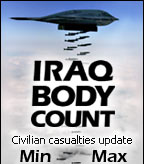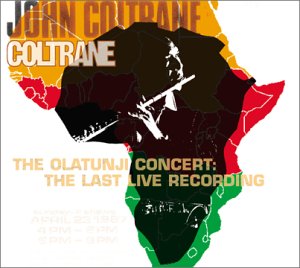Business Writing / Project Management
Selected Writings /
Music Reviews
Reformed Serial Killer Seeking
Roommates
About me
 |
Pain, and Peace
A review of John Coltrane's "The Olatunji Concert," by Paul Freedman
 My father would hate this album. He would listen to it and hear only grating
noise. The screaming of the saxophones, the crashing of the drums, the
distortion of the microphone. The experience would be physically painful
to him.
My father would hate this album. He would listen to it and hear only grating
noise. The screaming of the saxophones, the crashing of the drums, the
distortion of the microphone. The experience would be physically painful
to him.
There is real pain here, not just flirtation with atonality, but an exploration
of pain. But there is peace as well. The pain makes the peace possible.
Impulse Records released Olantunji in the summer of 2001, nearly 34 years
after its recording at the Olatunji Center in Manhattan, and months after
the death of this saxophone deity. Coltrane lived through pain, joy, beauty,
and exploration, and this album is true to all the aspects of his life.
There are two songs on the album. The first, "Ogunde," begins
with a single utterance from Coltrane on the tenor saxophone, a call to
the spirits, before the exploration and improvisation begin. The melody
of both songs is almost forgotten here; the band gets into the solos almost
immediately. The solos are uncontrolled, unfettered by jazz or blues scales,
rules of harmony, or even, at times, notes. There are moments
when it hurts to listen. But the band creates such tension that its resolution
at the the end of the song becomes a physical release, for the band and
the audience. It is the warm and weary calm after weeping. Alice Coltrane,
on the piano, is the bridge between the pain and peace. She is a summer
rain storm in the mountains, with big warm drops of rain so sweet you
look forward to the smell of the forest afterwards. Only after thoroughly
soothing the pain and shock of Sanders' solo does she introduce harmonic
complexity of her own, and set the tone for Coltrane to make sense of
it all. Here he explores the entire range of his saxophone, the soulful
low notes, the wailing breath of the upper notes, and the notes between
the notes. In the final moments, he returns to a beautiful and complex
cascade. When Trane finally repeats the melody, the band completes its
sweep, exhausting the shrieks and frenzy of Pharoah Sanders' tenor and
resolving in a profound cascade of cymbals and drums, big bass strings,
and open chords on the piano.
In the silence before the second track, the audience wonders where the
band will go next. This track, "My Favorite Things," begins where the
last left off, in peace. Jimmy Garrison takes an unaccompanied bass journey.
When he cues the band to join, the intensity mounts once again. The melody
only appears once or twice here, in the midst of Trane's passionate solo,
like the North Star shining through a gap in the clouds of a nighttime
rain storm.
The recording quality on the album exaggerates the drama of the music.
Unlike the classic live recordings of the Coltrane Quartet at the Village
Vanguard, the microphones here distort and fade as the musicians overpower
them with sound. At times it seems the drums and sax are locked in a struggle
for the attention of the tape. To my ears, the raw recording heightens
the release I feel at the end of both songs on the album.
This is not driving music. This is not music you would put on for a cocktail
party. There are moments of light and beauty here, but it is not pretty
music. It is, rather, an urgent demonstration of the power and depth of
Coltrane's quest.
The Olatunji Concert is available at music stores and at Amazon.com.